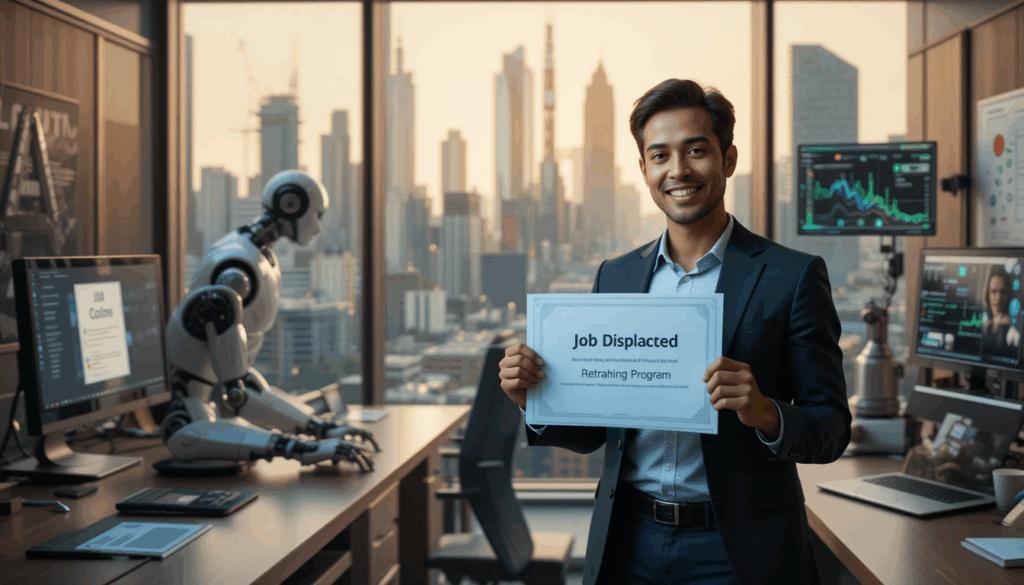The rise of artificial intelligence is no longer science fiction—it’s a 2025 reality reshaping white-collar jobs in coding, finance, and marketing. From AI-generated code to algorithm-driven financial analysis, mid-career professionals face unprecedented disruption. If you’re Googling “how to future-proof your career from AI” or scrambling for “retraining programs,” here’s your survival guide.
Why AI Threatens Mid-Career Stability
-
Coding: AI tools like GitHub Copilot automate up to 40% of routine programming tasks, reducing demand for junior developers.
-
Finance: Algorithms now handle risk assessments, trading, and audits—roles once requiring years of human expertise.
-
Marketing: ChatGPT-5 crafts campaigns in seconds, displacing copywriters and SEO specialists.
The result? Professionals aged 35–55 are forced into costly retraining or abrupt career pivots to stay employable.
Step 1: Identify AI-Proof Roles
Not all jobs are equally vulnerable. Focus on careers blending human creativity and technical oversight:
-
AI Ethics Auditors: Ensure responsible AI deployment.
-
Hybrid Managers: Lead teams of both humans and AI tools.
-
Healthcare Data Strategists: Bridge gaps between AI diagnostics and patient care.
Step 2: Master AI, Don’t Fear It
-
Upskill affordably: Platforms like Coursera offer Google AI certificates for under $50/month.
-
Specialize: Learn to fine-tune AI models (e.g., prompt engineering) rather than compete with them.
-
Freelance: Use AI tools to boost productivity, not replace you. Offer “Human + AI” services on Upwork.
Step 3: Leverage Government and Corporate Programs
-
Subsidized retraining: The 2025 WORK Act funds courses in AI oversight, cybersecurity, and renewable tech.
-
Employer partnerships: Companies like IBM and Salesforce now sponsor reskilling for at-risk roles.
Step 4: Pivot Strategically
-
Marketing pros: Shift from content creation to AI campaign analytics and emotional branding.
-
Coders: Move into AI debugging or legacy system modernization.
-
Finance workers: Transition to AI compliance roles or sustainable investing.
Step 5: Build Financial Resilience
-
Side hustles: Monetize AI-proof skills (e.g., mentorship, trades like plumbing).
-
Emergency fund: Save 6+ months of expenses to cushion career transitions.
The Silver Lining
While AI-driven job displacement upends traditional paths, it also creates opportunities. The World Economic Forum predicts 12 million new AI-adjacent roles by 2026—if you adapt.
Final Tip: Network relentlessly. Join AI ethics groups, attend hybrid industry conferences, and mentor others navigating this shift.



